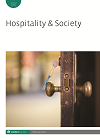
Full text loading...
 , Alison McIntosh2
, Alison McIntosh2
Previous research attests that the chef profession is gender-segregated; men dominate the industry and occupy the prime culinary positions. Understandings of the experiences of women executive chefs in the professional kitchen environment remain scant. This study adopted a qualitative life history method to reveal 23 women executive chefs’ professional trajectories and narratives about their experiences in the professional kitchen. The intersections of gender and the chef profession were revealed, and sexism was an experience shared amongst the participants. The findings showed that participants engaged in both ‘doing gender’ and ‘undoing gender’ during their professional trajectories through adapting how they behaved in the kitchen, as a coping strategy and to fulfil the perceived expectations of their role. In confirming the gendered environment of the chef profession, the study contributes new insights to the burgeoning critical hospitality research that seeks to prioritize and shed light on otherwise marginalized perspectives.

Article metrics loading...

Full text loading...
References


Data & Media loading...

Publication Date:
https://doi.org/10.1386/hosp_00069_1 Published content will be available immediately after check-out or when it is released in case of a pre-order. Please make sure to be logged in to see all available purchase options.